Article updated 21.7.2022
Using Teams effectively requires reviewing and modifying various settings as needed. Use the tips for efficient use of Teams to support your own work and collaboration with others.
Microsoft Teams and its power use are currently one of the most topical matters at the moment. They resurface in the context of various services such as consulting and training, as well as in solutions that enhance the use of Teams.
Take a closer look at five tips on Teams settings in different contexts, from instant messaging and video calling to different types of meetings.
Tip 1: Edit Teams notification settings
Going through the notification settings at an early stage of using Teams gives you a better idea of what things can be affected by your own settings to enhance information flow and collaboration. You can change the notification settings in the upper right corner of Teams, a menu will open when you click the three dots next to an organization’s name. Click Settings and Notifications section.
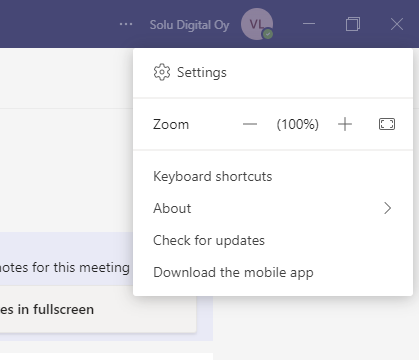
You can customize notification settings for unanswered emails and activities in meetings, teams, channels, and conversations between people. You can edit team and channel notifications by clicking the right arrow next to Custom.
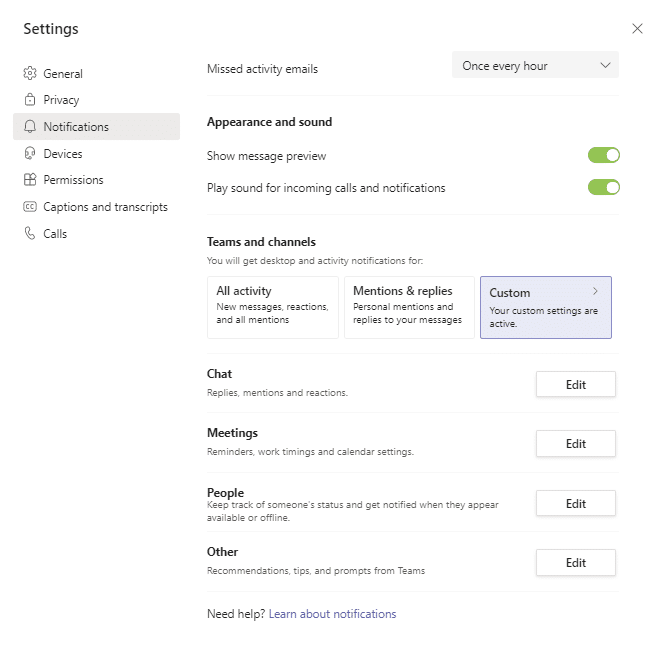
A new window will open for Teams, where you can edit notification settings for things like mentions, replies to discussions, and reactions. A banner is a message bubble that appears in the lower-right corner of your desktop. A feed is a feed of activities on the left side of the Teams main window displaying notifications when someone likes your post or mentions you, a channel, or a team you belong to, for example.
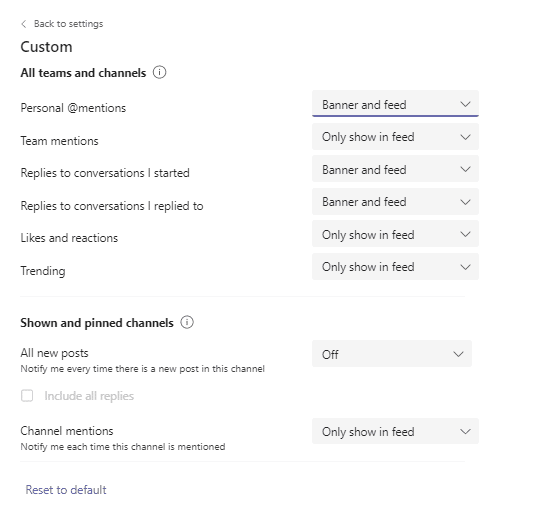
Tip 2: Edit your Teams meeting settings
Reviewing Teams meeting settings on a case-by-case basis before and during the meeting simplifies the tasks of the meeting organizer and saves time.
There are several ways to find Teams meeting settings, depending on whether you use Teams or Outlook, and whether the meeting is scheduled or an instant meeting.
Edit scheduled meeting settings via Outlook
In Outlook, you can access the Teams meeting settings by clicking to open the calendar invitation. Below the ‘Join Microsoft Teams Meeting’ meeting link, click Meeting Settings.
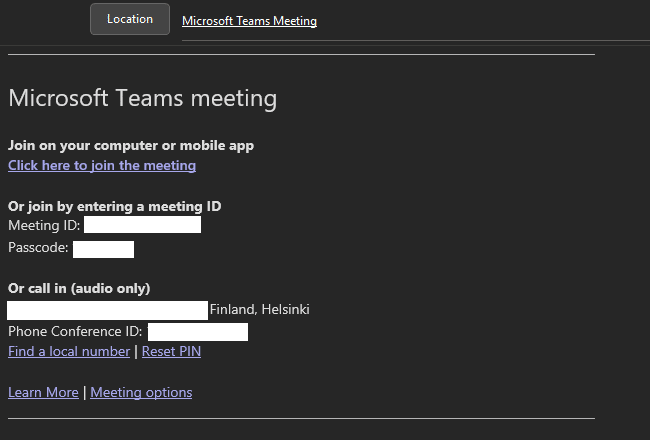
To edit meeting settings, move on to the next section in the text under Edit Teams meeting settings.
Edit your scheduled meeting settings via Teams
In Teams, go to the calendar, select the meeting, and click Meeting Options in the meeting window that opens on the Details tab.
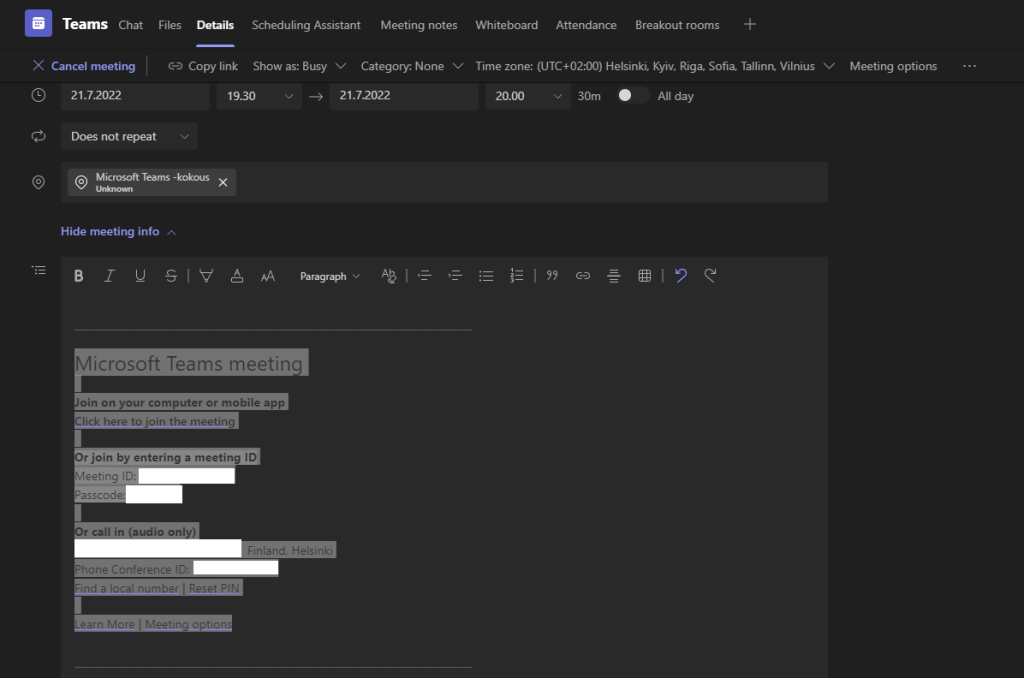
Edit your instant meeting settings via Teams
To join a meeting from a channel or calendar, select Meeting Now, click the three-point menu above the attendee list, and click Manage Permissions. Go to the Meeting Settings menu.
Edit Teams meeting settings
Teams redirects you to a web browser that opens the editable settings for the meeting in question.
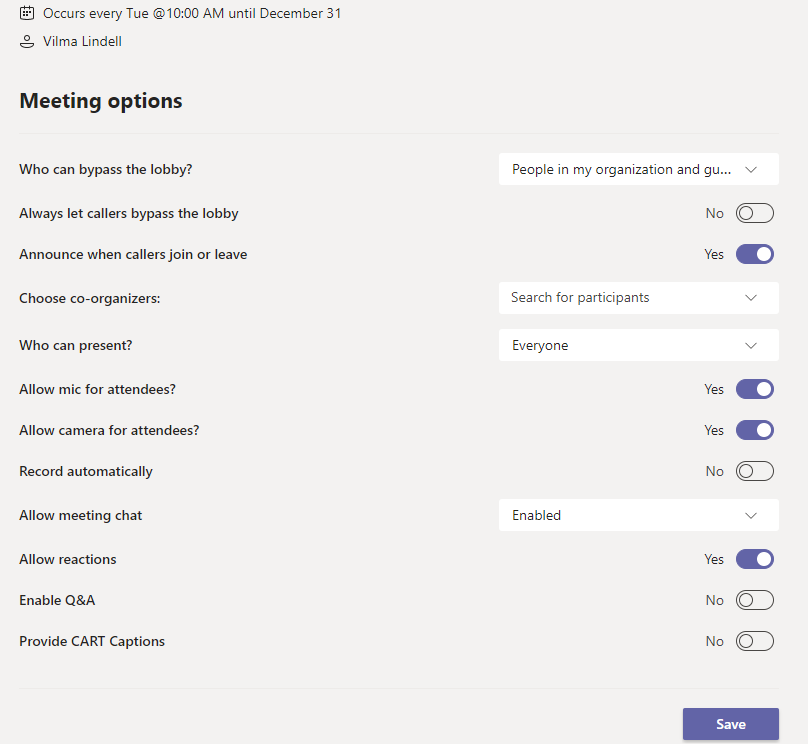
You can determine who can bypass the meeting wait mode before the meeting begins:
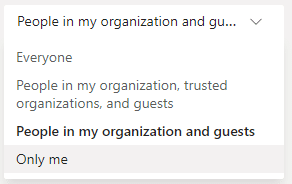
You can also choose co-organizers within your organization and specify who can present at the meeting:
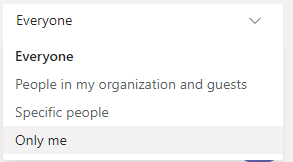
Below is a list of the purposes of the different options:
• All – Anyone with access to the meeting link joins the meeting as a presenter.
• People in my organization – Only people in your organization are presenters. External participants will join the meeting as participants.
• Specific people – Only the people you select from the invite list are presenters. Everyone else joins the meeting as participants.
• Only me – Only the organizer is the presenter. All other participants will join the meeting as participants.
Note that you must send a meeting invitation to assign roles to meeting participants as well as directly to any people you select as presenters. Guest users from another organization cannot be selected as presenters.
You can also specify if you allow conversation during and outside the meeting:
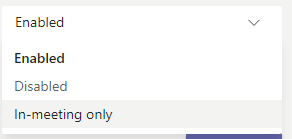
A comprehensive list of the functionalities of the different roles can be found on the Microsoft site.
Manage settings during meetings
The meeting organizer can conveniently update the settings during the meeting.
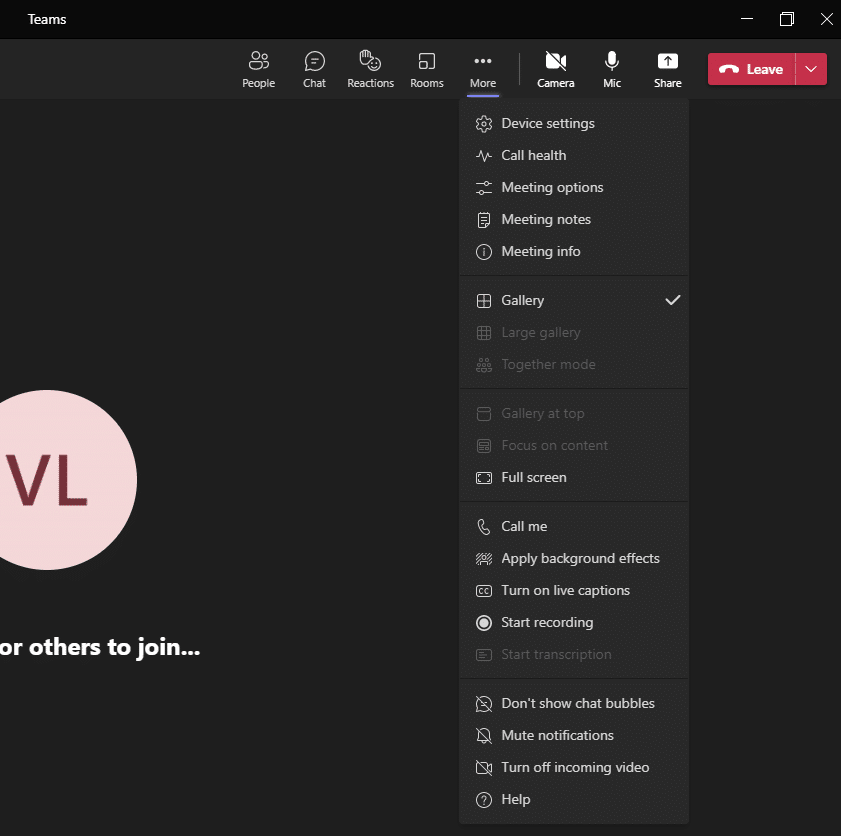
For example, participants’ microphones can now be turned off so that they cannot unmute during a meeting. In the Meeting settings, go to Allow mic for attendees? and change the selector to No.
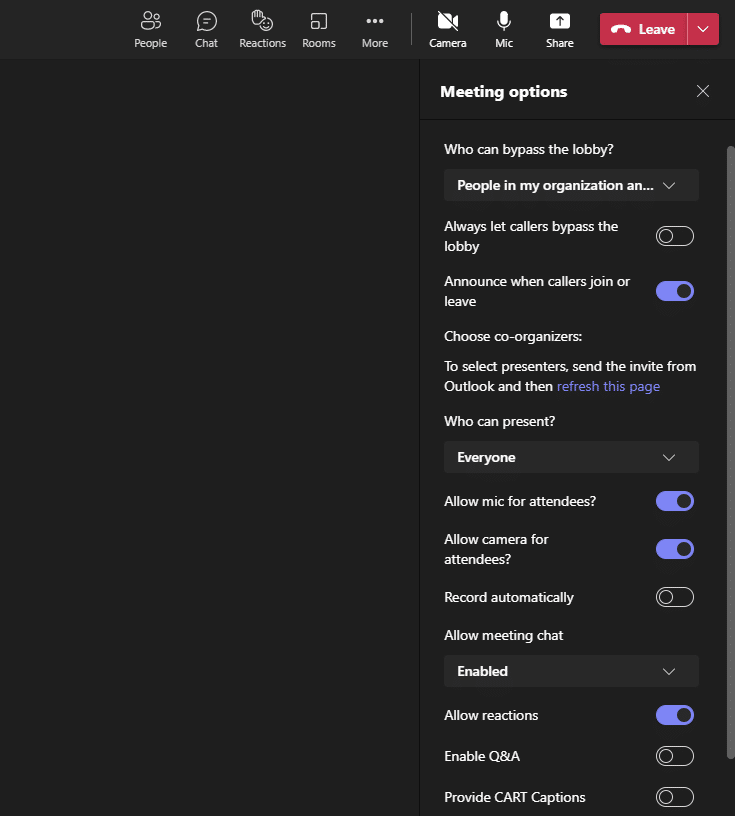
Tip 3: Background noise suppression
For example, reduce background noise from traffic or public spaces. Click your Teams profile menu open in the top right corner. Select Settings and go to Devices.
Noise suppression is set to automatic by default, so Teams decides the best background noise suppression level based on local noise. Select High from the menu for even stronger background noise cancellation.
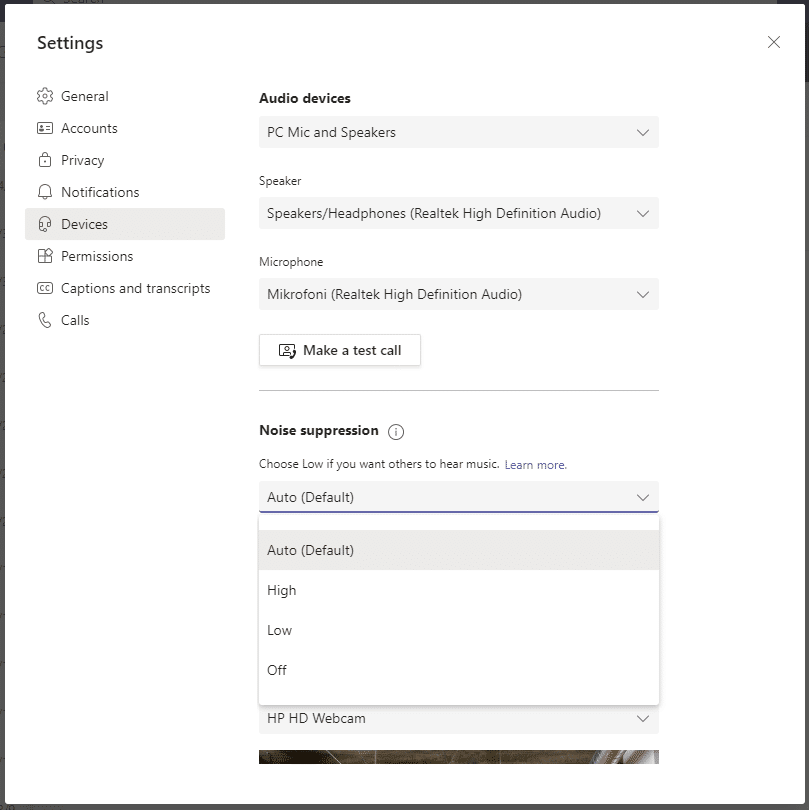
Tip 4: Blur the background and use the wallpaper in a Teams meeting
You can turn on your video recorder before joining a meeting to edit the background that appears in your video in Background Filters.
A collection of different wallpapers opens on the right side of the meeting window, from which you can also select background blurring. Click Add New to choose your favorite wallpaper from your own files.
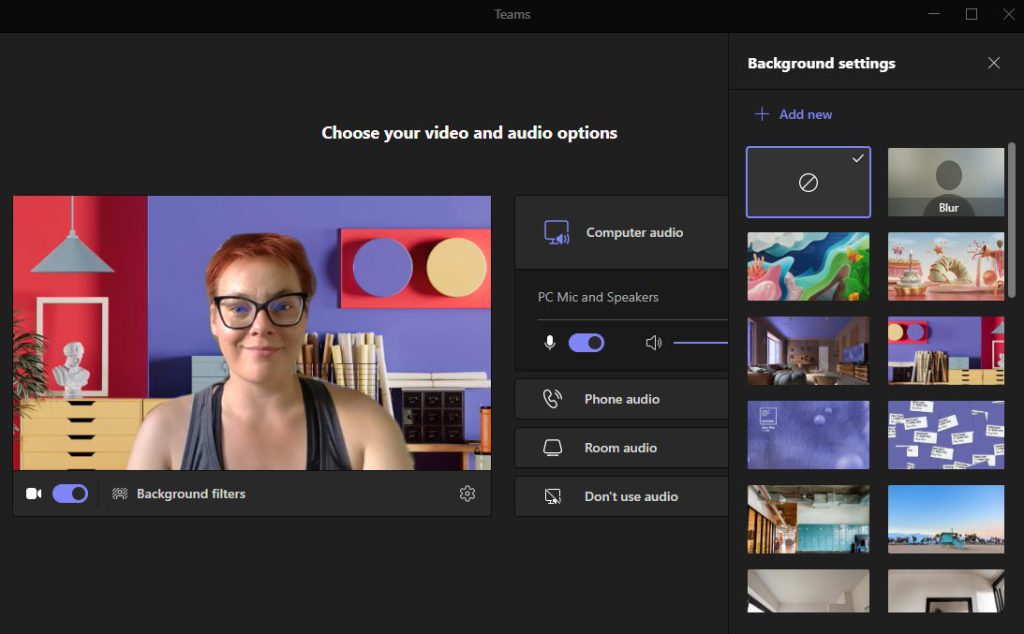
Tip 5: Edit other Teams settings
You should also go through the other sections of the Settings menu thoroughly to get the Teams user experience suited to yourself and your work.
Edit general Teams settings
In the General Settings section, you can customize the theme of your Teams interface from a light default theme to a dark and high contrast themes.
For example, you can choose if you want Teams to start automatically when Windows starts or in the background without pop-ups. You can also choose that when you close Teams, it stays running in the background.
Editing the language settings and activating the spelling function and the meeting function that opens in a new window can also be found here.
Edit Teams privacy settings
When you use Do Not Disturb mode, notifications for activities in Teams and Outlook are turned off. However, you can use the name or phone number to specify the primary contacts whose conversations, calls, and @messages will be notified in Do Not Disturb mode.
You can also prevent people from reaching you or seeing your contact information. In addition, you can turn read receipts on or off. Read receipts tell both you and the recipients of the messages you sent after you read them, and vice versa. The Polls feature is a convenient way to activate meeting attendees on a regular basis, so I recommend keeping this setting active.
Edit Teams device settings
In the Teams device settings, you can configure and test the microphone and speakers or headphones and video recorder by making a test call with the Teams Echo bot. In the Devices section of Teams settings, click Make a test call.
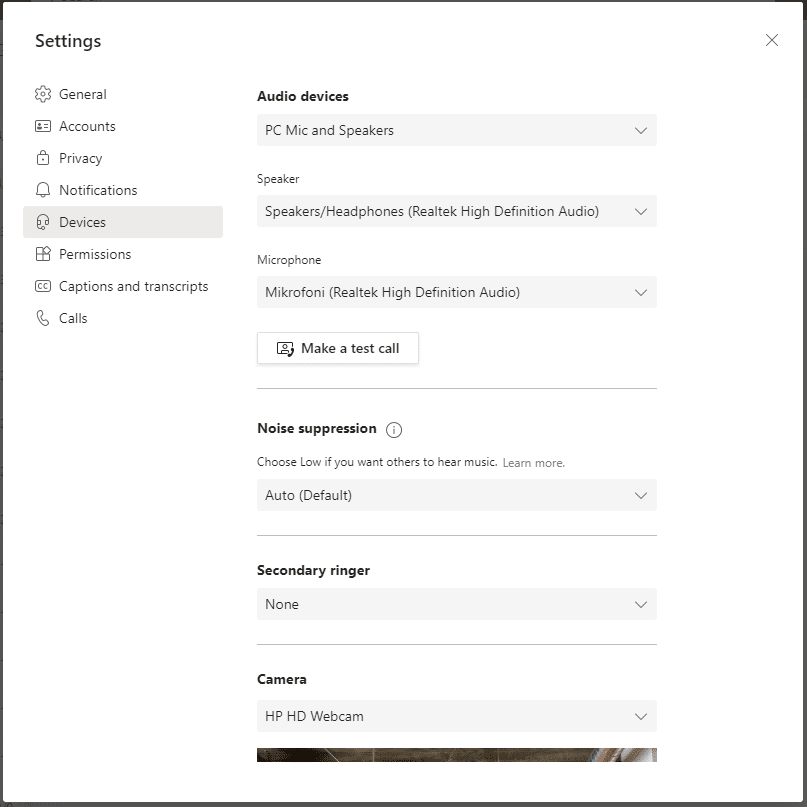
The Teams bot will make you a test call. Listen to the recorded instructions to test the functionality of your microphone and camera.
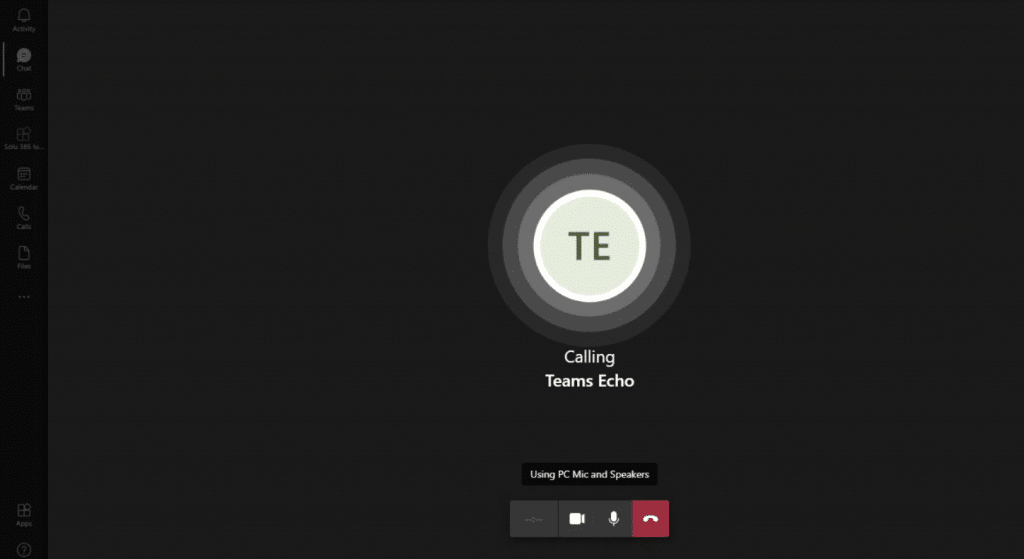
Edit Teams permissions
By editing these settings, you can either give your device the same access to all the apps you use in Teams.
Edit Teams call settings
You can customize the settings for answering Teams calls, voicemail and ringing tone, or turn on easy-to-use features, such as text phone mode. Text phone mode (TTY) is used for text communication over a telephone line. However, note the prerequisite for connecting a text phone, such as a TTY device, to use the function.
In the Calls section, under Ease of Use, click Enable TTY Mode.
Enhance the use of Teams with suitable settings
For example, the long-term benefits of saving time are significant when the settings you customize support the way you work, just the way it suits you. So, go through the Teams settings in peace and with thought, trying and testing different combinations and use cases.
Vilma Lindell
Consultant
Read more about Teams:
- Microsoft Teams and Solu 365 solutions for teamwork
- Teams training services
- Take control of your Microsoft Teams
- Teams for power use
- Is Teams the next-generation intranet?
- Successful deployment of Teams requires unified practices, training, and communication
- SharePoint pages as Teams applications empower remote work
- Microsoft Teams brings customers closer remotely
- Teams management with Solu 365® workgroup automation
- Automate project management with the Solu 365® tool
- All 5 tips for Teams articles
Download Microsoft Teams guides
Download our guides to smooth Teams group management and make your organization’s virtual work easier. Leave your contact information and we will send the guides to your email.








